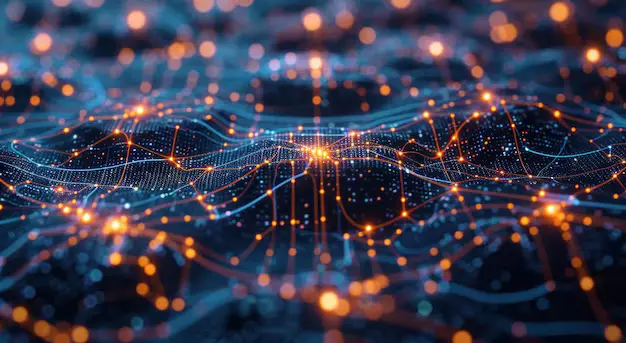How Generative AI is Revolutionising Media Production


Generative AI, the subset of artificial intelligence that creates content based on prompts, is increasingly finding its place in film and television production. By analysing patterns and structures in input data, generative AI can generate text, images, video, and more, potentially transforming media creation and consumption. A recent PwC study projects that the AI market in media and entertainment will grow by 35% annually, reaching $1.8 billion by 2025.
Emerging Applications in Filmmaking
One exciting area where generative AI is making waves is scriptwriting. While still evolving, AI-powered technology can analyse vast amounts of data from scripts and other sources, potentially offering writers inspiration and new narrative possibilities.
Virtual production is another area where AI is being explored. It could help generate previsualizations of scenes, sets, and characters, potentially streamlining the pre-production process. During production, generative AI may also be used to create virtual sets, digital actors, and even crowds, potentially reducing the need for extensive on-set resources.. A strong example of this is Disney's "The Mandalorian," which utilised AI for its virtual sets, resulting in a reported 50% reduction in production time.
Streamlining Post-Production Workflows
In post-production, AI algorithms are being integrated into editing platforms, offering the potential to analyse footage, identify key sequences, and even automate certain editing tasks based on predetermined parameters. This could streamline the editing process and save valuable time.
Generative AI is also being explored in colour grading with the potential to analyse and replicate specific looks from various sources. While still under development, this technology could eventually automate some aspects of the colour grading process, saving both time and resources.
Reaching Audiences and Beyond
Netflix recently reported a 75% user engagement increase due to AI-driven recommendations. What’s clear is that AI algorithms are being studied as a way to analyse data and potentially inform marketing and distribution strategies, helping studios target specific audiences and improve engagement. Streaming platforms are also exploring AI algorithms to personalise recommendations for viewers, potentially enhancing the user experience.
Additionally, generative AI might be able to help tailor content for different regions and demographics through localised versions with subtitles or voice-overs, potentially expanding its reach.
Challenges and Considerations
While generative AI offers numerous potential benefits, it also presents challenges. Human oversight remains essential to ensure the artistic integrity and quality of the final product. AI may excel at generating content based on patterns, but it still struggles with the creativity, emotional complexity, and nuances that resonate with audiences.
Ethical and legal concerns also arise, particularly around ownership, intellectual property rights, and copyrights, especially when AI generates content that closely resembles existing work.
The Future of Generative AI in Media
Generative AI is undoubtedly making waves in the film and television industry, and its impact will likely grow as the technology continues to evolve. While it presents both opportunities and challenges, it has the potential to expand the creative toolset available to filmmakers and artists, leading to new forms of storytelling and audience engagement.
As this technology develops, it's important for the industry to navigate the ethical and legal considerations, ensuring that AI is used responsibly and creatively to enrich the world of media production.
Sohonet is your partner in film production services such as remote video editing, video collaboration, color grading, dailies reviewing and more. Contact us for more information!
Get the latest news and updates from Sohonet in your inbox

%20(62)%20(2).png)
%20(63)%20(2).png)
